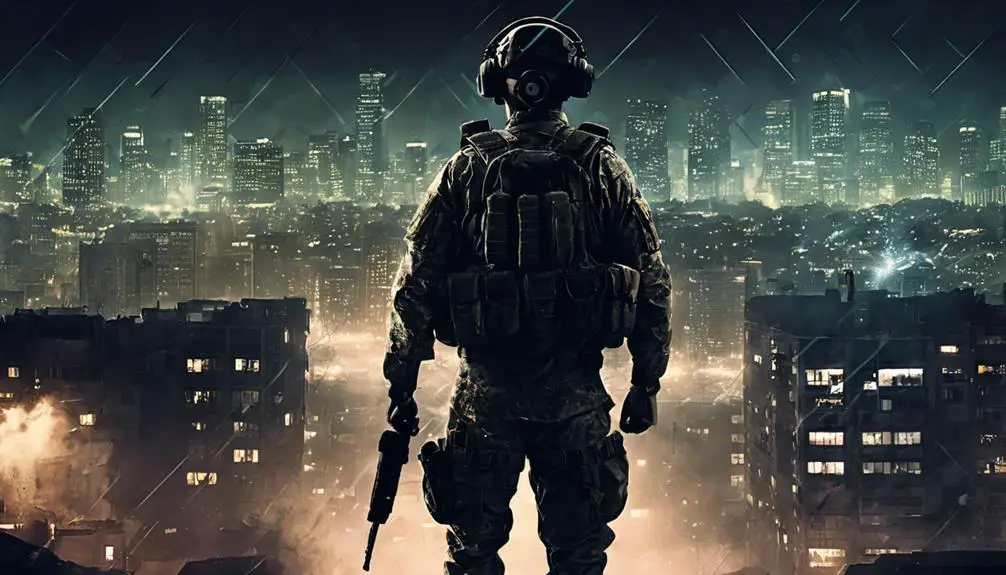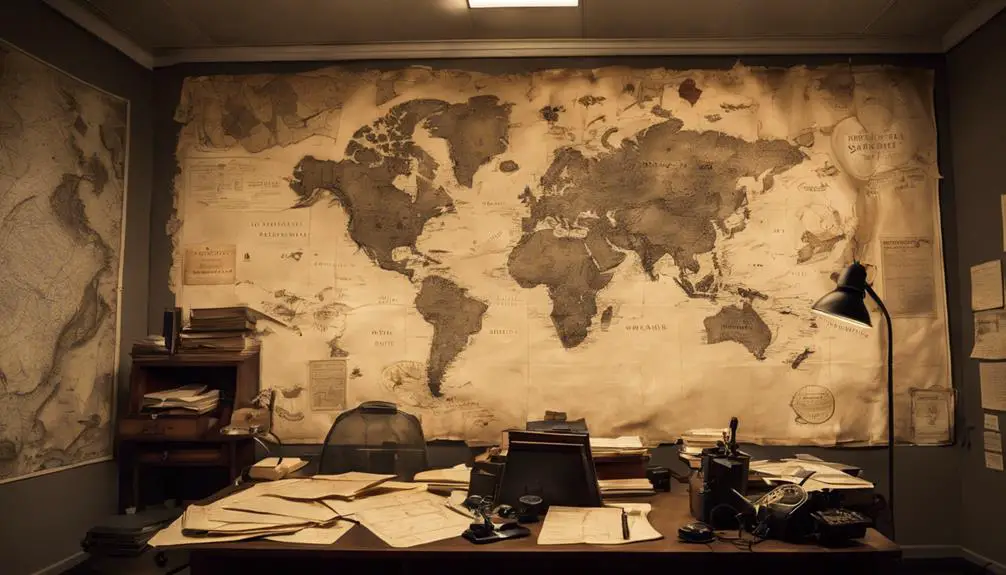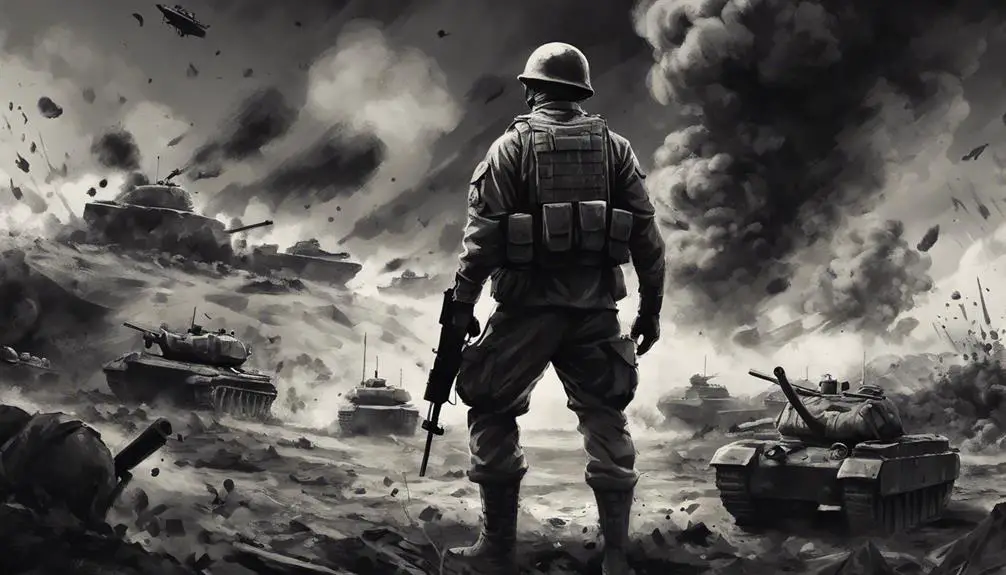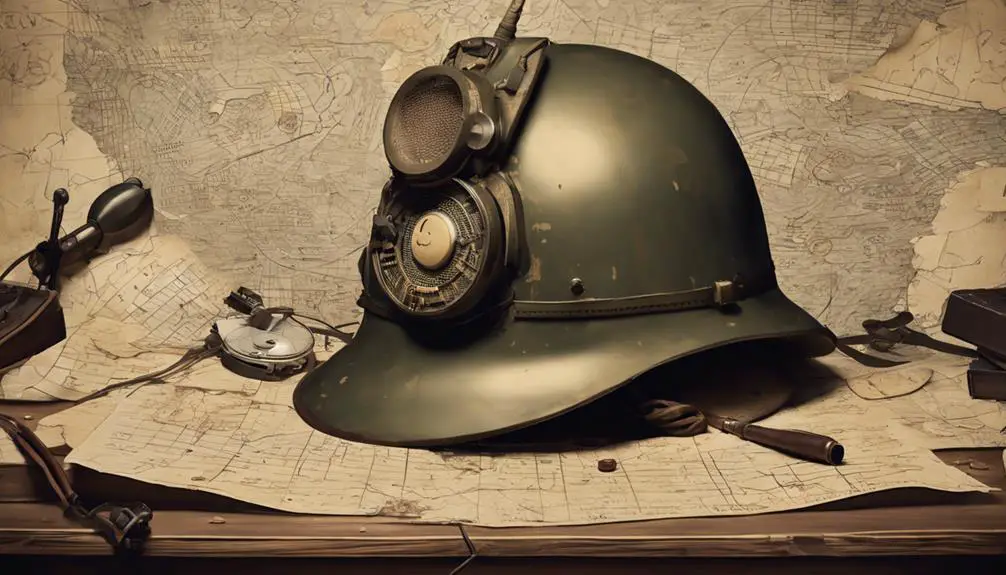You're about to immerse yourself in the world of military slang, where grasping phrases like 'SITREP' (situation report) and 'ASAP' (as soon as possible) can mean the difference between success and failure in high-stakes operational environments. You'll discover that military jargon has a rich history, with terms like 'SITREP' originating from the British Army in World War II. As you explore the world of military slang, you'll learn about tactical communication codes, intelligence gathering lingo, and battlefield phrases like 'HOOAH' and 'Oscar-Mike'. You're about to uncover the intricacies of military communication – and that's just the beginning.
Declassified: Military Terms Explained

When you're immersed in a military environment, you'll likely encounter a plethora of unfamiliar terms that can leave you scratching your head, from 'ASAP' (as soon as possible) to 'SITREP' (situation report). But have you ever wondered where these terms originate from? Military jargon has a rich history, with many terms borrowed from various cultures and languages. For instance, the term 'SITREP' is believed to have originated from the British Army during World War II.
As you explore further into military communication, you'll discover that classified document access is an important aspect of military operations. Classified documents contain sensitive information that requires clearance and authorization to access. The level of clearance depends on the individual's role and the sensitivity of the information. For instance, a soldier may have access to confidential documents, while a high-ranking officer may have access to top-secret documents.
Understanding military jargon and classified document access is vital for effective communication and collaboration within the military. By familiarizing yourself with these terms and protocols, you'll be better equipped to navigate the complex world of military communication.
Tactical Communication Codes

In tactical operations, you'll encounter a range of communication codes designed to convey critical information quickly and securely, such as brevity codes and authentication tables, which are vital for guaranteeing effective and efficient communication on the battlefield. These codes enable you to convey complex information in a concise manner, reducing transmission time and minimizing the risk of misinterpretation.
When using radio protocols, you'll need to adhere to standardized communication procedures to guarantee seamless transmission and reception of critical information. This includes using secure signal encryption methods to protect sensitive information from unauthorized access. Encryption algorithms, such as Advanced Encryption Standard (AES), are commonly used to scramble signals, making it virtually impossible for unauthorized parties to intercept and decipher the information. By utilizing these encryption methods, you can rest assured that your communication remains secure and confidential, even in high-stakes operational environments.
Intelligence Gathering Lingo

During reconnaissance missions, you'll need to familiarize yourself with the unique terminology used in intelligence gathering, as it enables efficient communication of critical information and facilitates swift decision-making in high-pressure situations. Intelligence gathering lingo is essential in distinguishing between essential and trivial information, ensuring that you stay focused on the mission objective.
Surveillance tradecraft is a critical aspect of intelligence gathering, involving the use of covert methods to gather information without being detected. You'll need to understand the different types of surveillance, including stationary, mobile, and technical surveillance, as well as the various techniques used to avoid detection, such as dry cleaning and surveillance detection routes.
Counterintelligence methods are also necessary in intelligence gathering, as they help to identify and counter potential threats to your mission. You'll need to be aware of the different counterintelligence techniques, including counter-surveillance, counter-interrogation, and counter-deception methods. By mastering this lingo, you'll be able to communicate effectively with your team and stay one step ahead of the enemy.
Battlefield Slang 101

You'll need to familiarize yourself with battlefield slang to effectively communicate with your team and stay situationally aware on the battlefield. This isn't just about using cool lingo; it's about conveying critical information quickly and accurately. Warrior wisdom dictates that clear communication is key to success in high-pressure situations. That's why understanding battlefield slang is essential for any military operative.
In combat chronicles, you'll often hear terms like 'HOOAH' (Heard, Understood, Acknowledged) or 'SITREP' (Situation Report). These phrases are essential for conveying crucial information about enemy positions, friendly forces, and mission objectives. You'll need to know what ' Oscar-Mike' means (On the Move) and how to respond to a 'Medevac' call (Medical Evacuation). Don't get left behind; stay ahead of the curve by mastering battlefield slang. It's not just about speaking the language; it's about being part of a cohesive unit that can adapt and respond to changing circumstances. By internalizing these terms, you'll become a valuable asset on the battlefield, capable of making quick decisions and executing complex operations with precision.
Code Words and Phrases

As you integrate battlefield slang into your vocabulary, it's equally important to familiarize yourself with code words and phrases that convey vital information about mission objectives, enemy positions, and friendly forces. These cryptic expressions are used to maintain secrecy over radio chatter, ensuring that sensitive information doesn't fall into the wrong hands. Code words and phrases are often used in conjunction with signal flares, smoke signals, or other visual cues to convey complex information quickly and efficiently. For instance, a code phrase like 'Eclipse-6' might indicate a change in mission objectives, while 'Sierra-Bravo' could signal a shift in enemy positions. Mastering these code words and phrases is essential, as they can mean the difference between success and failure on the battlefield. By understanding these cryptic expressions, you'll be better equipped to process critical information, make informed decisions, and stay one step ahead of the enemy.
Frequently Asked Questions
What Is the Origin of the Term "Foxhole" in Military Slang?
You're wondering about the origin of the term "foxhole" in military slang. This trench lingo dates back to World War I, where soldiers dug shallow holes for protection in no man's land. These makeshift shelters resembled fox dens, hence the name "foxhole." As battlefield colloquialisms evolved, the term stuck, becoming an integral part of military vocabulary. Today, it's a ubiquitous term used to describe a defensive position or shelter on the battlefield.
Are Military Slang Terms Used Universally Across All Branches?
You're wondering if military slang terms are used universally across all branches. Well, buckle up, because the answer is a resounding "not quite." While some slang terms, like "foxhole," are widely recognized, branch differences lead to unique slang cultures. The Army, for instance, has its own lingo, like "hooah," which might not be used in the Navy. Slang universality is limited, and each branch has its own flavor of jargon. So, don't assume that what works in one branch works everywhere.
Can Civilians Use Military Slang in Informal Conversations?
When you utilize colloquial language from a specific cultural group, like the military, without being part of that group, it can raise cultural appropriation concerns. In informal conversations, you may incorporate military slang, but be mindful of the norms. Using terms like 'sitrep' or 'OPSEC' might come across as pretentious or trying too hard. Be mindful of your audience and consider the context; respecting the origins of the language you're using is crucial.
How Do Military Slang Terms Evolve Over Time?
As you explore how military slang terms evolve over time, you'll notice that linguistic adaptation plays an essential role. Cultural influence also greatly contributes to the transformation of slang terms. You'll see that military personnel often borrow words and phrases from their surroundings, incorporating them into their unique language. This blending of languages and cultural references shapes the slang, making it a dynamic and ever-changing aspect of military communication.
Are Military Slang Terms Used in Formal Military Communications?
You'll rarely, if not ever, hear military slang terms in formal briefings or official communications. These channels require precision and clarity, making slang inappropriate. When discussing classified information, you'll need a security clearance, and using slang could compromise the integrity of the conversation. Even in informal settings, military personnel tend to use standard terminology to avoid miscommunication.







